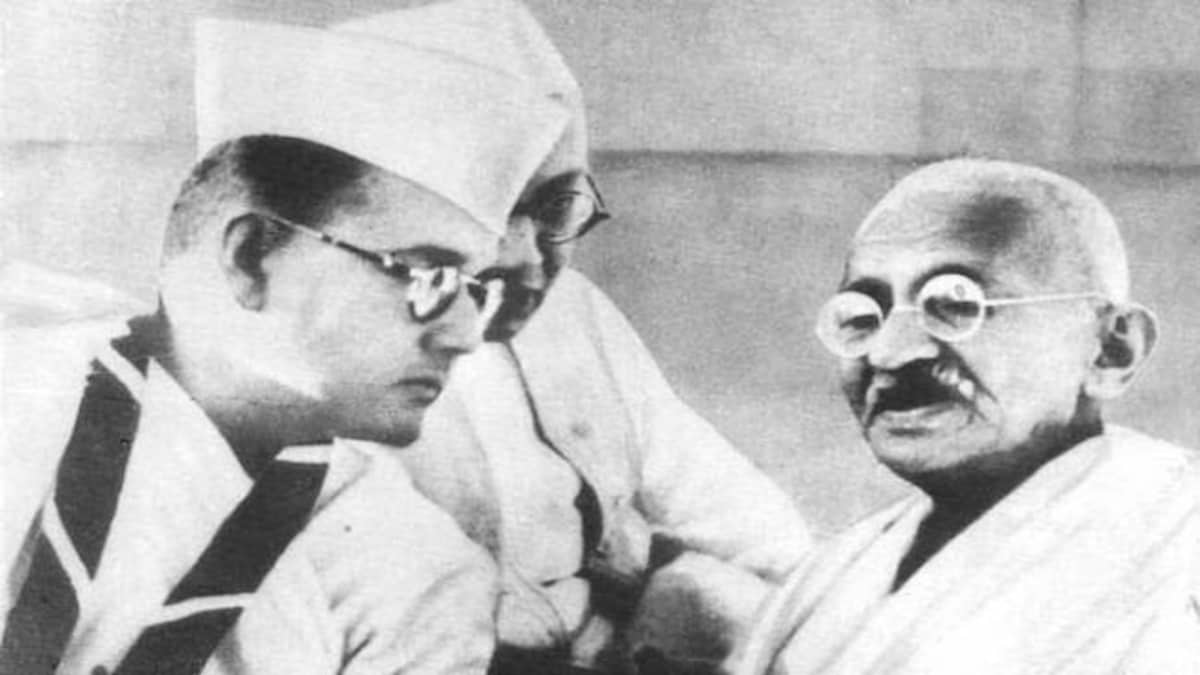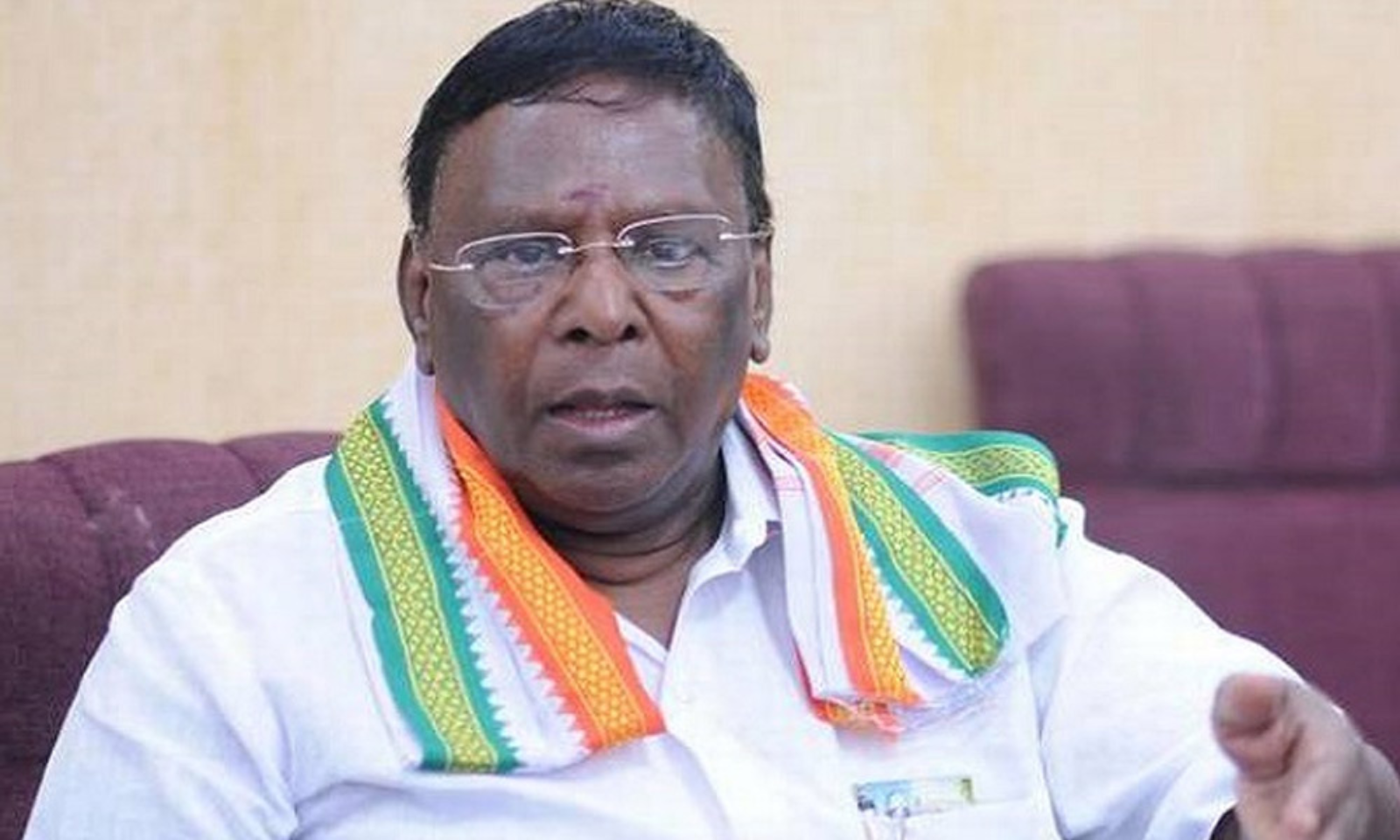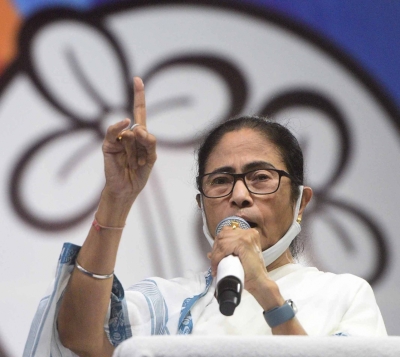Why Has Mahatma’s Follower Tana Bhagat Laid Siege to Latehar Collectorate?

Ranchi, May 1 : An epitome of simplicity, penance and humility, like their “God” Mahatma Gandhi, the Tana Bhagat community of Jharkhand has been leading a humble life untouched by the hi-tech age for over a century.
Much like their revered Father of the Nation Mahatma Gandhi, they wear all-white clothes, carry a national flag in their hands, don a Gandhi cap and keep away from non-vegetarian food and liquor.
With a population of about 30,000, the Tana Bhagat community is spread out in around seven-eight districts of the state.
Since Independence, when they gave a very tough fight to the British till date, their life has been a saga of sacrifice, toil and austerity.
Although they have survived the fast-changing world without getting drawn towards the glittering modern life, one aspect they are finding tough to come to terms with is that they have been deprived of their “right”, “respect” and acknowledgement for the struggle and sacrifice they made for the country’s freedom.
Living up to their Gandhian principles of truth and non-violence, the community has been for decades, softly pursuing for the acknowledgement which they rightfully deserve. Sensing their efforts going in vain, they have now resorted to agitation.
Understanding their current stand will not be possible without delving into their history which dates back to 1914 when the Tana Bhagat cult was started by one Jatra Oraon.
Jatra hailed from Chingari village of Bishunpur block of Gumla district. He launched a campaign against the much-prevalent animal-sacrifice, meat-eating, animal killing, superstitions and alcohol in the tribal society. He set up an example of a simple life in front of the society and succeeding in making a difference.
A majority of the people adopted this new lifestyle and gradually he came to be known as Tana Bhagat. During that time, exploitation and atrocities were also at its peak under the British regime. Under his leadership, thousands joined the Tana Bhagat sect and extended support in the fight against the feudal lords, moneylenders and missionaries.
When Oraon openly raised his voice against forced labour and refused to pay revenue, and taxes, the British government panicked and arrested him in 1914 and sentenced him to one- and-a-half years jail.
After his release from the jail, Oraon passed away suddenly, but the movement started by him continued and due to similar principles like the non-violent policy, the sect merged with the Swadeshi movement of Mahatma Gandhi.
Soon, the community adopted the Tricolour with the spinning wheel as its emblem flag and started treating Mahatma Gandhi like a God.
According to history, in 1914 there were about 26,000 followers of the Tana sect and even today, the number is around the same. The families of Bhagat are mainly settled in different villages of Lohardaga, Gumla, Khunti, Ranchi, Chatra, Latehar, Simdega districts.
Tana Bhagat’s participation in the freedom movement has gone into the annals of history.
A large number of the community members participated in the Gaya Conference of Congress in 1922 and the Nagpur Satyagraha of 1923. During the Ramgarh Congress session of 1940, the members presented a Rs 400 bag to Mahatma Gandhi.
When the Tana Bhagat movement was started, the British government tried to suppress it. Their land was auctioned. The government of Independent India also failed to return their land to them. Demanding back their land, the Tana Bhagat is continuing a non-violent movement.
In 1948, the independent government of the country passed the ‘Tana Bhagat Rayat
Agricultural Land Restoration Act’. Under this act, a provision was made to return their land auctioned by the British government from 1913 to 1942.
Once again, the community is agitated. Their demands mainly revolve around the land and traditions. They want that land to be demarcated and they be given its possession. Besides, the traditional self-government system should be restored in tribal dominated areas.
The governments did take measures to address some of their demands. Like, former the Raghuvar Das government had completely waived off the rent of their land since 1956. Last year, the incumbent Hemant Soren government also announced a special allowance of Rs 2,000 per annum for purchase of khadi clothes.
Tana Bhagat Development Authority was also constituted on the initiative of Raghuvar Das’s government. Through this, the land return of many Tana Bhagats was also given on “paper”.
But Tana Bhagats say that they did not get possession of the land.
Last week, hundreds of Tana Bhagats laid a siege to a number of government offices of the district headquarters, including Latehar District Collectorate for four days. They got the offices vacated and sat there day and night, singing hymns and prayers.
Tana Bhagats demand that Panchayati Raj elections in the tribal dominated areas be stopped and restoration of the traditional tribal self-government system under the Fifth Schedule of the Constitution of India.
On Saturday, Latehar Deputy Commissioner Abu Imran convinced them to end the ‘dharna’ by assuring them to soon organise a meeting with the Governor, Chief Minister and Minister of Panchayati Raj.
Putting forth his community’s demand, District President of Tana Bhagat Sangh, Bahadur Tana Bhagat says that tribal society has been living under its traditional self-government system for hundreds of years. Even the fifth schedule of the constitution talks about maintaining the traditional system of tribals. In such a situation, Panchayat elections in the tribal areas is an encroachment of their tradition.
In September 2020 too, Tana Bhagats had demanded changes in land laws in the interest of the community. They staged an agitation for three consecutive days at Tori Junction in Latehar. Due to the protest, movement of trains on Tori-Shivpur, Tori-Lohardaga railway sections and Barkakana-Barwadih were affected for 60 hours.
Sudhir Pal, a senior journalist who has conducted an in depth deep study on tribal life, says that the sentiments of Tana Bhagats in connection with their their uniquely-sacred traditions needs to be understood and respected.
Sadly, the system often treats them like an article exhibited in a museum. Their problems are related to water-forest-land which can be solved with empathy and consideration, he added.





